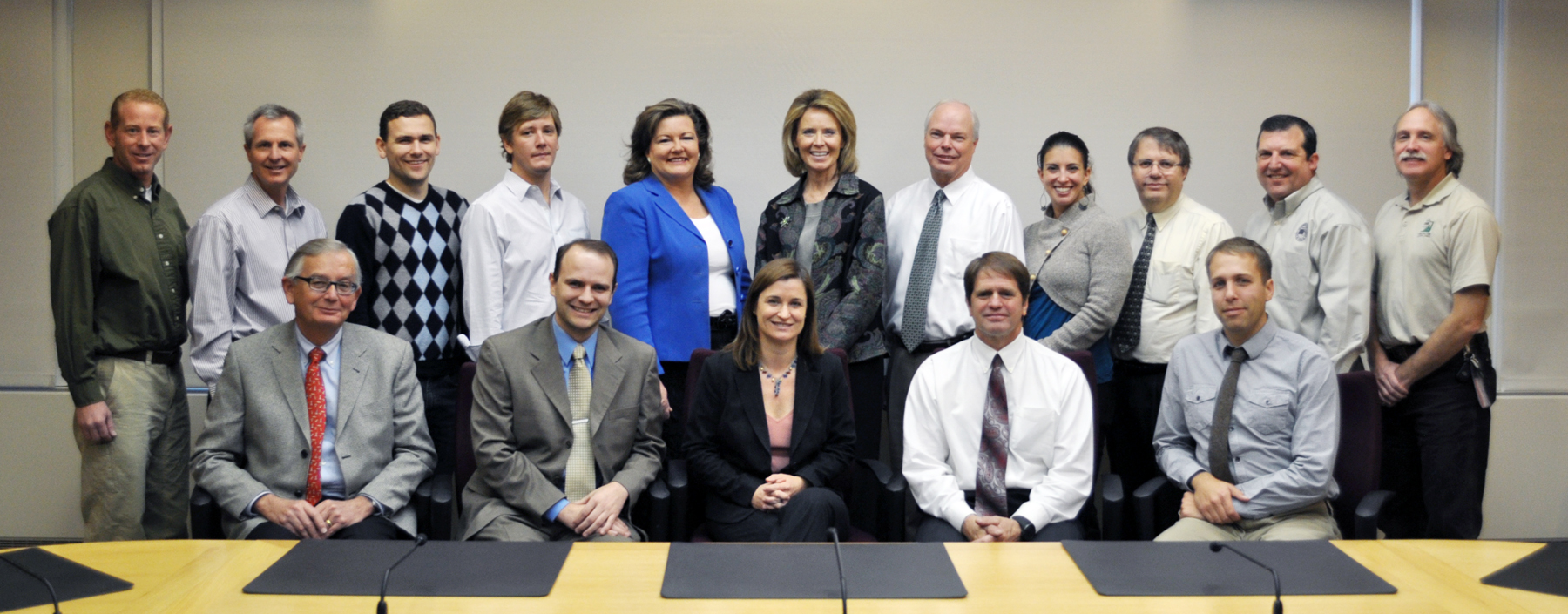The Jordan River Commission was created by an Interlocal Cooperation Agreement in August 2010. It was created to facilitate regional implementation of the Blueprint Jordan River, to serve as a technical resource to local communities, and to provide a forum for coordination of planning, restoration, and responsible development along the Jordan River corridor. The Commission adopted its first Strategic Plan in June 2015.
The Commission is comprised of a mix of governmental and non-governmental members working together to enhance, preserve, protect, and responsibly develop the river corridor. Current membership includes 17 cities, two counties, six regional special service districts, and two state agencies. The Commission partnership continues to grow each year.
The Commission is a governmental entity with its base operations supported by its partners. All projects and efforts undertaken by the Commission are funded by either grants or private donations. The Commission is a capacity-building organization. We work to increase and improve our member agencies’ ability to implement the projects identified in Blueprint Jordan River, to raise public awareness of the Jordan River corridor and the issues it faces, and to help promote coordination and communication among Jordan River stakeholders. The Commission has no regulatory or maintenance authority for the Jordan River corridor.

Purpose
The Interlocal Cooperation Agreement identifies seven purposes for the Commission:
1. Encourage and promote multiple uses of the river and river corridor
2. Foster communication and coordination
3. Promote resource utilization and protection
4. Maintain and develop recreation access
5. Monitor and promote responsible economic development
6. Identify and secure funding for the acquisition of critical habitat and open space
7. Engage in ongoing planning for the identified Jordan River Blueprint study area
History
Over the course of 2007 and 2008, Envision Utah facilitated the development of a regional visioning document for the Jordan River Corridor. The highly collaborative process resulted in the development of the Blueprint Jordan River. The Blueprint vision process involved nearly 3,000 participants and was supported by Resolution by the majority of local governments adjacent to the river. One of the recommendations of the Blueprint was the creation of a governing authority to implement the vision concepts.
Building on the public enthusiasm, Envision Utah coordinated the Blueprint Jordan River Implementation Committee, composed of representatives of each of the 18 jurisdictions along the river and other river interests. That group constructed the framework of a commission to make the Blueprint a reality. In late March 2010, the committee completed a draft Interlocal Agreement creating the Commission and unanimously endorsed presenting it to local governments for formal approval. In 2010, presentations on the interlocal agreement were made to each city council along the corridor as well as the three county councils. Envision Utah donated its time to facilitate discussions during the 18 month period of development of the Commission.
In August 2010, Davis, Utah and Salt Lake Counties, along with Sandy, North Salt Lake, and West Valley City, signed the original Interlocal Cooperation Agreement creating the Jordan River Commission. West Valley City Councilman Corey Rushton was selected as the Commission’s first chair and Sandy City Councilman Chris McCandless as Vice-Chair.
These initial Jordan River Commission members have since been joined by additional cities and regional agencies. In 2015, a Concurrent Resolution was approved by the Utah State Legislature and signed by Governor Herbert, allowing the Utah Department of Environmental Quality and Utah Department of Natural Resources, both of which have specific state regulatory functions relating to the Jordan River, to join the Interlocal Cooperation Agreement as well.
The Commission hired an executive director in March 2011. Since then, the Commission has established a Technical Advisory Committee, expanded governing board membership to include up to 15 non-governmental entities (Ex-officio members) including individuals, businesses, land managers, and non-profit organizations, all working together to implement the Blueprint Jordan River.
JRC Guiding Documents
The documents that guide the direction and activities of the Jordan River Commission can be found here. These include:
- Blueprint Jordan River
- Interlocal Cooperation Agreement
- Bylaws
- Annual Budget
- Strategic Plan (2015-2018)
- Best Practices for Riverfront Communities

